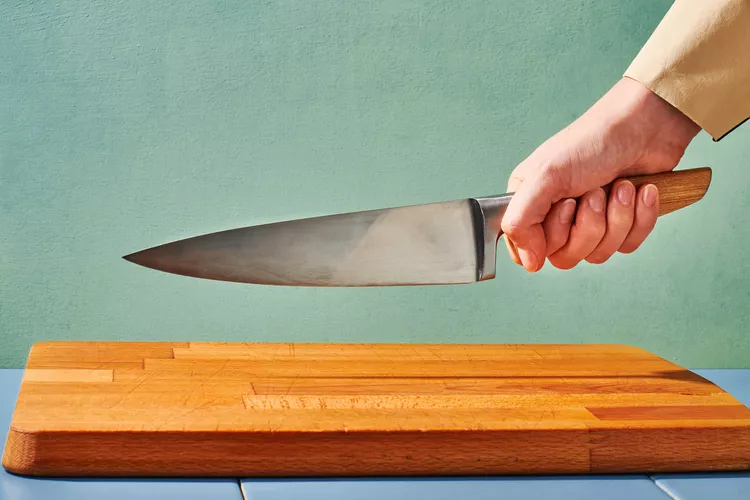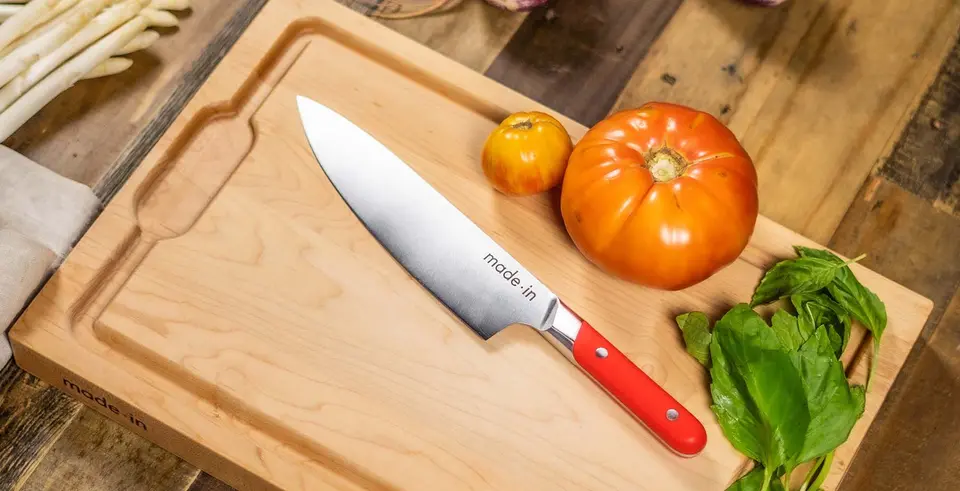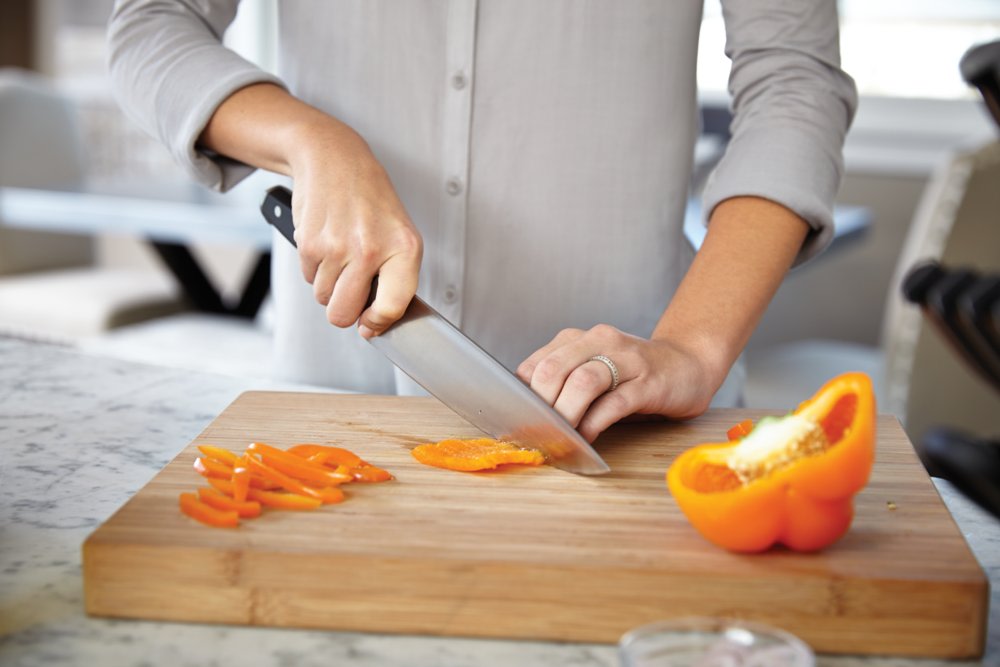Last updated on January 17th, 2024 at 05:48 am
Cooking requires the correct tools. French knives are essential to chefs. French knives are used worldwide for their versatility and precision.
This article will explain what a French knife is, its features, functions, and why every cook needs one.
What is a French Knife?
French knives, often known as chef’s knives, are multipurpose cutting tools with broad, tapered blades and curved edges. It’s the perfect chef’s knife, balancing force and control. French knives can chop, slice, dice, and mince with their 8–10-inch blades.
The Anatomy of a French Knife

Understanding a French knife’s parts is essential:
Blade: French knives have high-carbon stainless steel blades. It controls knife cutting and durability.
Tang: The knife’s tang, the blade’s extension into the handle, provides stability and balance.
Bolster: Between the blade and handle, the bolster prevents the hand from slipping onto the blade.
Handle: The handle provides grip and control for easy knife handling. Wood, composite, or synthetic materials make it.
Features of a French Knife

French knives have various unique traits. Examine these notable traits:
Versatility
Chefs and home cooks like the French knife for its versatility. The French knife cuts meats, vegetables, fruits, and herbs with its broad, robust blade. The French knife cuts onions, tomatoes, and roasts with accuracy.
Controlled Precision
The French knife’s curved edge lets you rock and cut precisely. This tool is very useful for delicately mincing herbs or slicing fish or poultry. Controlling the knife’s action ensures precise cuts and nicely prepared ingredients.
Weight, Balance
A well-balanced French knife makes long-term use pleasant. Balance and weight give the knife cutting force and control. These characteristics are essential for smooth cutting.
Durability
French knives can handle professional kitchen conditions. Their high-carbon stainless steel design ensures durability and longevity. French knives can last a lifetime if properly maintained.
Uses of a French Knife

Let’s examine the French knife’s many culinary uses now that we understand its outstanding features:
Chopping: French knives are ideal for cutting vegetables, herbs, and nuts due to their wide blade and sharp edge. Its rocking motion makes cutting fast and precise.
Slicing: The French knife’s long, thin blade cuts meats, fruits, and vegetables evenly. The French knife cuts roasts and tomato slices evenly.
Dicing: The French knife excels at dicing onions, bell peppers, and carrots. Its rolling motion and perfect control produce evenly sized dice.
Mincing: French knives make minced garlic, ginger, and herbs easy. Its curved blade and sharp edge make mincing easy, releasing flavours and aromas.
Precision Cuts: The French knife excels in boning, filleting, and trimming. Its sharp tip and manoeuvrability provide precision and finesse.
Smashing: The French knife’s flat side can break garlic cloves, nuts, or chicken for even cooking.
Crushing: Crushing herbs or spices? Pressure from the French knife’s broad side releases items’ flavours and smells.
Scooping: Use the flat blade edge to scoop chopped ingredients into bowls or pans.
What Sets the French Knife Apart?

French knives are unique for several reasons:
French knife: All-purpose tool. French knives can slice, dice, and more.
Efficiency: The French knife’s broad blade and curved edge cut quickly. This efficiency saves cooking time.
Comfort and Control: French knives are ergonomically designed for comfort and control. This feature cuts safely and precisely.
Performance: Professional cooks worldwide utilise French knives. Their reliability and performance make them a commercial kitchen standard.
French Knife FAQs
French knives dishwasher-safe?
French knives should be hand-washed to stay sharp. Dishwashers destroy knife blades and handles with high heat and harsh detergents.
French knife sharpening frequency?
Knife usage and quality determine sharpening frequency. French knives should be sharpened every few months or when they cut poorly.
Do French knives cut bones?
French knives can cut light bones but not hefty ones like splitting massive bones or cleaving dense flesh. A bone cleaver or butcher’s knife is best for this.
French knife storage?
Use a knife block, magnetic strip, or knife sheath to protect your French knife. Avoid putting it loosely in drawers where other tools may damage the blade.
French knives for lefties?
French knives are ambidextrous, making them comfortable for right- and left-handed users. Users of all orientations can grasp the blade and handle symmetrically.
Conclusion
Finally, any chef needs a French knife. Professional and home cooks choose it for its versatility, precision, and durability. French knives balance power and control for chopping, slicing, dicing, and mincing.
This cooking gadget can last a lifetime with appropriate care.
Next time you cook, use a French knife for easy, quick food prep. Happy cooking!
